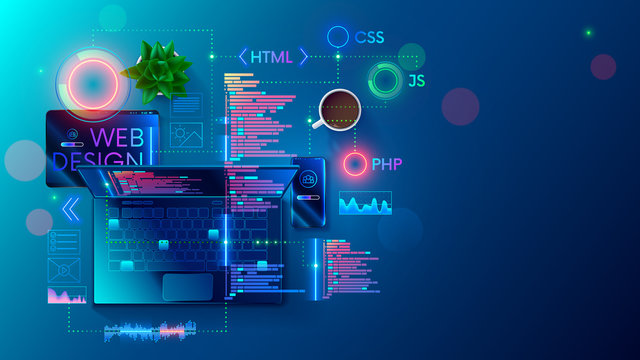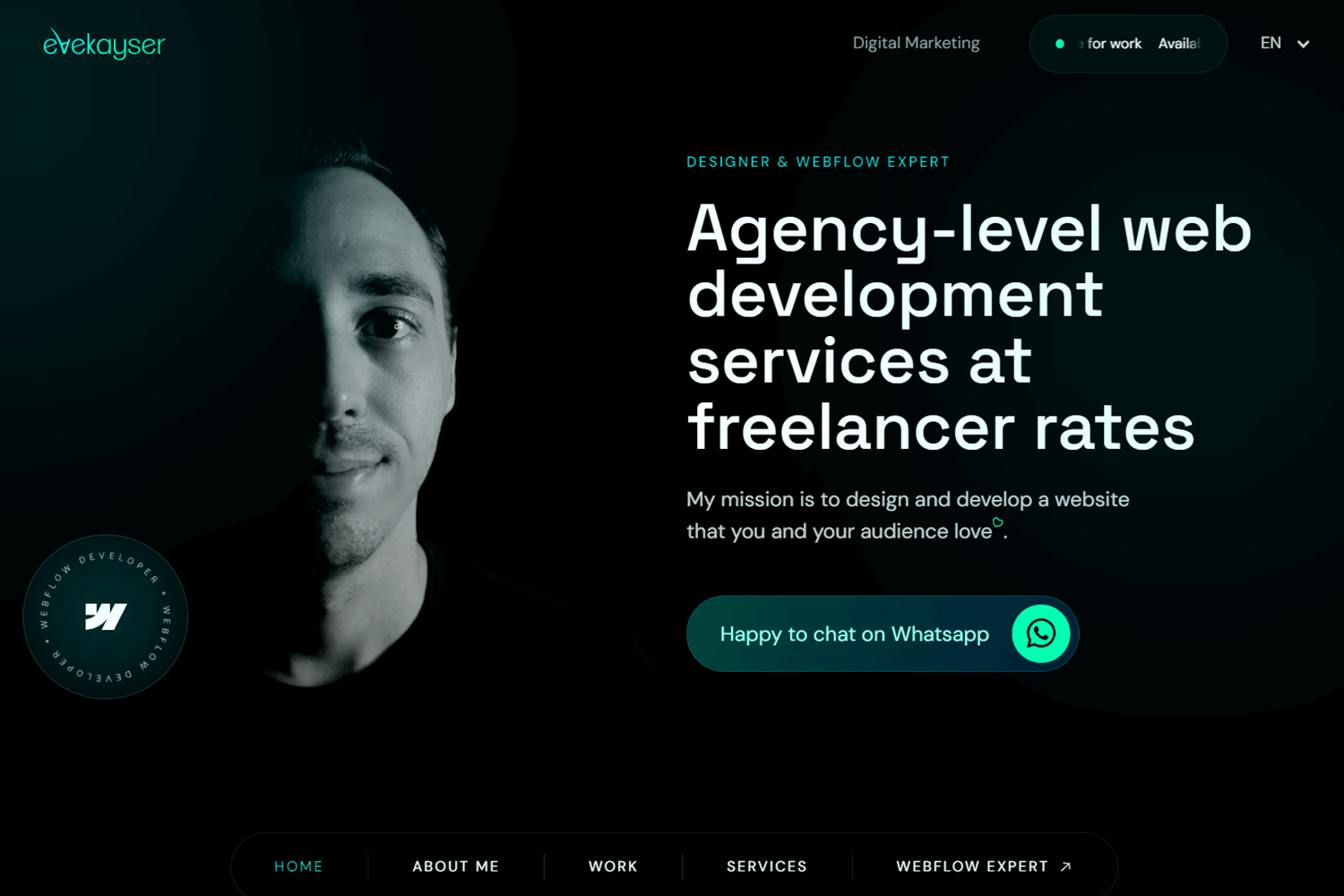Web Design Trends: What’s New and What Works for Modern Websites
Web Design Trends: What’s New and What Works for Modern Websites
Blog Article
Elevate Your Online Existence With Spectacular Website Design Tips and Trends
In today's electronic landscape, a compelling on the internet presence is necessary for companies seeking to differentiate themselves from the competitors. The interaction of aesthetic charm, existing layout trends, and customer experience plays a crucial duty in accomplishing this goal. By discovering components such as minimalism, vibrant typography, and lively color design, you can create an interesting setting that reverberates with visitors. Nevertheless, the subtleties of reliable style expand beyond appearances; comprehending essential approaches for optimization can significantly influence your success. What particular fads and strategies can boost your internet site to new heights?
Value of Visual Allure
This statistic highlights the critical function that aesthetics play in customer engagement and retention. Web design. Efficient visual style incorporates elements such as shade systems, images, layout, and typography, all of which contribute to a cohesive and attractive individual experience.
Furthermore, an aesthetically enticing website instills a feeling of trustworthiness and expertise. Users are most likely to rely on a site that looks well-structured and refined, which can significantly affect conversion rates. On the other hand, a messy or unappealing design can cause high bounce prices, as individuals may view the web site as undependable or obsolete.
Furthermore, the appearances of a web site can communicate brand identification and values. Regular usage of branding aspects, such as logo designs and shade combinations, strengthens recognition and cultivates a deeper link with the target market. In final thought, focusing on visual appeal is necessary for developing engaging, trustworthy, and brand-aligned online experiences that resonate with users.
Current Style Patterns
Modern web style is constantly developing, and remaining upgraded with current trends is necessary for creating impactful on the internet experiences. One noticeable fad is the rise of minimalism, identified by clean lines, enough white space, and a focus on necessary aspects. This approach not just enhances use but likewise enables content to take center phase.
Additionally, dark setting user interfaces have actually obtained appeal, providing users with an aesthetically striking choice while lowering eye stress. This fad lines up well with user choices, providing a contemporary aesthetic that is both elegant and useful.

Furthermore, using micro-interactions-- subtle computer animations that engage users-- has ended up being indispensable in enhancing customer experience (Web design). These tiny however impactful components can assist customers seamlessly throughout the site
Crucial Layout Components
Effective web layout pivots on several important style components that together develop a cohesive and engaging individual experience. The very first of these elements is layout, which determines exactly how web content is organized on the page. A well-structured layout not only boosts readability however likewise guides users with the website effortlessly.
Shade plays an important role in design, influencing emotions and brand perception - Web design. A harmonious shade scheme can stimulate certain sensations and establish a visual pecking order, therefore Find Out More drawing focus to key aspects. Similarly, typography is essential; the choice of font styles have to align with the brand name identity and make certain legibility across tools.
Images, including pictures and graphics, includes visual passion and can interact messages quickly. High-quality pictures relevant to the material improve the total aesthetic and involvement. Additionally, whitespace is commonly neglected yet is important for producing equilibrium. It helps prevent clutter, enabling users to concentrate on the important elements without distraction.
Finally, consistency across all style elements enhances brand identification and makes navigating intuitive. By meticulously incorporating these crucial layout components, internet designers can create visually click this appealing and useful websites that mesmerize visitors and motivate communication.
User Experience Optimization
A seamless individual experience is critical for preserving site visitors and driving conversions on a web site. Maximizing customer experience (UX) includes understanding your target market and tailoring design components to satisfy their needs properly. Secret components of UX optimization consist of user-friendly navigating, quick loading times, and clear telephone calls to activity.
Integrate breadcrumb tracks to help users easily backtrack, lessening disappointment. Rate is another vital aspect; sites need to pack within 3 seconds to prevent customers from abandoning the website.
Moreover, your website's design need to focus on clarity. Usage clear typefaces, contrasting colors, and whitespace to create an aesthetically appealing design that guides customers through material easily. Phone calls to activity need to be plainly shown, using workable language that urges users to engage.
Mobile Responsiveness Approaches
Nearly half of all internet traffic now stems from smart phones, underscoring the relevance of implementing robust mobile responsiveness techniques. To ensure optimum individual experience throughout numerous display sizes, web developers must accept a liquid grid design that adapts flawlessly to different devices. This approach enables web content to restructure and resize without endangering performance or aesthetic appeals.
Integrating versatile pictures and media questions is necessary. Photos must instantly adjust their dimension according to the viewport, while media queries can spot tool qualities and apply tailored CSS styles accordingly. This method boosts lots times and makes sure that users have a visually enticing experience.
Furthermore, prioritize touch-friendly navigating aspects. Buttons and links must be conveniently tappable, with sufficient spacing to avoid misclicks. Preventing hover-dependent communications better enhances use on browse around these guys touchscreens.
Finally, carrying out normal testing across various devices and internet browsers is important. Tools like Google's Mobile-Friendly Test can assist recognize locations requiring enhancement. By adopting these mobile responsiveness techniques, companies can boost customer engagement, increase online search engine positions, and ultimately drive conversions, thus boosting their on-line visibility effectively.

Conclusion
Finally, the execution of effective website design strategies dramatically boosts on the internet presence. By focusing on aesthetic allure via present layout trends and crucial components, companies can promote integrity and interaction. Moreover, optimizing user experience and making certain mobile responsiveness are crucial for facilitating smooth communication across tools. As the digital landscape evolves, embracing these concepts will not only astound visitors however additionally drive conversions, ultimately adding to the overall success of on the internet endeavors.

Conversely, a unappealing or cluttered layout can lead to high bounce rates, as customers may view the web site as untrustworthy or outdated.
Effective web layout hinges on several essential layout elements that with each other produce a interesting and natural individual experience. Enhancing user experience (UX) involves comprehending your audience and customizing layout elements to fulfill their demands properly.
Report this page